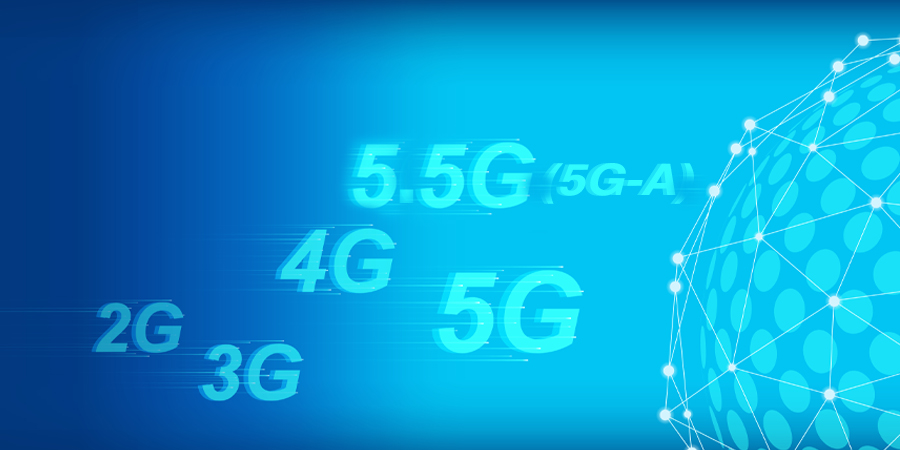The evolution of mobile communications technologies has seen a new generation appear roughly every 10 years, with half-generation technologies emerging every five years. Each generation introduces key, iconic technologies, such as TDMA and CDMA for 2G and 3G and OFDM, MIMO and SDR for 4G. 5G has introduced massive MIMO, polar code and URLLC as its key technologies as well.
Chief Marketing Officer of Huawei Carrier BG, Dr. Philip Song, has stated at GSMA’s M360 APAC 2023 that the pursuit of technological progress will continue, and the company’s efforts to explore are already underway with a focus on 2030 as the delivery goal.
In the interim, 5.5G (5G-A) is being viewed as a favorable option due to allowing networks to evolve step by step. 5.5G (5G-A) turns uncertainty into certainty, creating an optimal business choice. And 5.5G (5G-A) technologies (such as RTBC, UCBC, …) have been explored and verified.
Furthermore, Dr. Song explained that Huawei's ELAA technology have proven to be effective solutions for improving coverage in the 6 GHz and mmWave frequency band, “which is important for the deployment of 5.5G (5G-A),” he specified.
A successful field test in Chengdu, China, demonstrated that the coverage of the 6 GHz band can be greatly enhanced, similar to that of the 3.5 GHz band. Additionally, in Hangzhou, China, Huawei effectively tackled the challenges presented by the millimeter wave band and achieved a downlink peak rate of 10 Gbps and exceeded expectations in terms of mobility experience in a large-scale continuous networking scenario, thanks to ELAA and intelligent beam management.
Industry digitalization places a greater demand on uplink rates compared to downlink rates. Huawei has made advancements in uplink technology.
Dr. Song stated that they have decoupled uplink and downlink to realize multi-band convergence and high uplink rates. These innovative solutions have been tested in various scenarios, like coal mining and manufacturing. The solutions can support up to 1 Gbps uplink rates, enabling capabilities such as HD video backhaul, remote control and quality inspections.
In one example — a coal mine in China — Huawei utilized the entire 700 MHz band for uplink video backhaul. This enabled real-time viewing of smooth videos from over 100 operation areas underground, improving safety and efficiency.
5.5G (5G-A) Passive IoT technology combines cellular networks and passive tags, offering advantages like passiveness, wide coverage, low cost and positioning support. It can be used in various industries, such as smart warehousing, production management, logistics and retail. The market for carriers in this field is expected to grow from 10 billion to 100 billion connections in the coming years.
In recent tests, Passive IoT achieved a maximum coverage of 235 meters, which is 10 times greater than RFID technology. Additionally, it can transmit sensor data like temperature and humidity. This technology is being tested with industry partners in Qingdao, China, and has already been implemented in material supply management and logistics tracking, significantly improving efficiency in both.
Manufacturing automation has stricter network requirements compared to remote-controlled machines like cranes at ports. It needs low latency (less than 10 ms) and high reliability (five or six nines). To meet these demands, a Chinese carrier collaborated with Huawei and other industry partners to develop the first 5.5G (5G-A) flexible trial production line.
Moreover, innovative technologies were employed, including dual-fed and selective receiving and deterministic uplink and downlink scheduling, to establish a highly deterministic network connection that supports high concurrency. This enables carrier networks to meet the real-time production control needs of enterprises and expands their market opportunities.
“Release 18, the first 3GPP standard for 5.5G (5G-A), is expected to be frozen in the first half of 2024.We are preparing for the 5.5G (5G-A) era and are ready to collaborate with global carriers and partners to realize the true value of 5.5G (5G-A) together,” noted Dr. Song.
He additionally stated that they aim to advance technologies and establish a prosperous ecosystem to enable more individuals and industries to embrace digitalization.
“The ultimate goal is to unlock the full potential and benefits of 5.5G (5G-A),” Dr. Song concluded.





